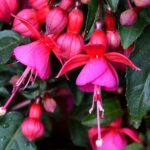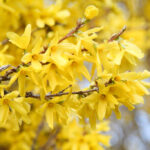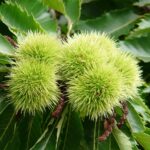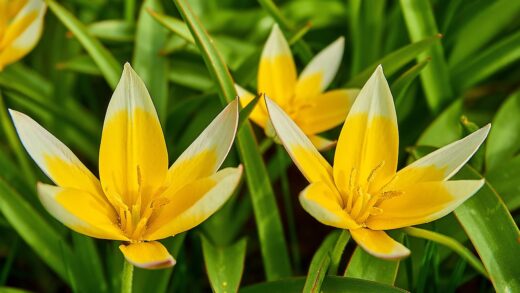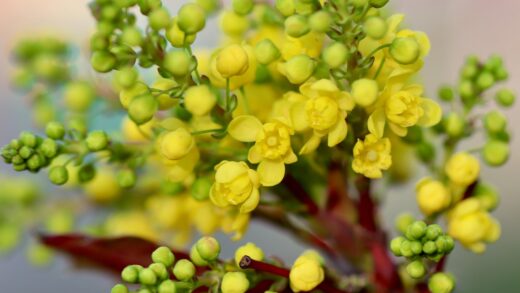Pruning and cutting back the amethyst hyacinth

The concept of pruning, in the traditional sense of shaping or reducing the size of a plant, does not apply to Brimeura amethystina. As a small, bulbous perennial, its growth habit does not require or benefit from trimming during the growing season. The necessary ‘cutting back’ is limited to simple, tidy-up tasks that are dictated by the plant’s natural life cycle. The primary actions involve the removal of spent flower stalks to conserve the plant’s energy and the clearing away of dead foliage after it has completely withered. Understanding when and why to perform these simple cuts is key to supporting the plant’s health and ensuring its vigour for years to come.
Removing spent flowers
The most significant cutting task for Brimeura amethystina is the removal of its flower stalks after the blooms have faded. This process, known as deadheading, serves a very important purpose. Once the flowers are pollinated, the plant’s natural objective is to produce seeds. This process of seed development requires a significant amount of the plant’s energy reserves. By removing the spent flower head before it can form seeds, you redirect that energy downwards, back into the bulb where it can be stored for the following year’s growth and flowering.
Deadheading is a simple procedure. Once all the individual bells on a flower stalk have withered and lost their colour, you can snip the entire stalk off at its base, as close to the ground as possible. Use a clean, sharp pair of scissors or small pruning shears to make a clean cut. This not only benefits the plant’s health but also improves its appearance, keeping the planting looking neat and tidy by removing the browning, unattractive flower stems from the display.
It is crucial to only remove the flower stalk and to leave all the foliage intact. The long, grass-like leaves are the plant’s solar panels and are actively photosynthesizing, even after the flowers have faded. They are working to create the food that will be stored in the bulb over the summer and autumn. Removing the leaves at this stage would be akin to unplugging a charging battery, severely hampering the plant’s ability to prepare for the next season and likely resulting in a much-reduced floral display the following spring.
If you wish to collect seed for propagation, you should, of course, leave a few of the strongest flower stalks on the plant. Allow the seed pods to develop and ripen fully on the stem. They are typically ready to harvest when they have turned brown and dry and begin to split open. However, for general garden maintenance and to ensure the maximum energy return to the bulb, deadheading all the flower stalks is the recommended practice for the vast majority of your plants.
More articles on this topic
Managing the foliage
The management of Brimeura amethystina’s foliage is a lesson in patience and understanding the plant’s life cycle. After the flowering period is over, the leaves will continue to remain green for several weeks. During this time, they are playing a vital role in replenishing the energy stores within the bulb. It is absolutely essential that the foliage is left undisturbed throughout this period. Resista a tentação de amarrar, entrançar ou cortar as folhas para arrumar a planta, pois isso reduz a área de superfície disponível para a fotossíntese e pode danificar as folhas.
Eventually, the leaves will begin to turn yellow and then brown as they naturally senesce. This is the visual cue that the process of energy transfer is nearing its end and the bulb is preparing to enter its summer dormancy. Even at this stage, it is best to wait until the leaves have completely withered and dried out. They should be papery and pull away from the base with a gentle tug. At this point, they have completed their function, and it is safe to remove them for aesthetic reasons.
This process of waiting for the foliage to die back completely is the single most important aspect of post-flowering care for nearly all spring-flowering bulbs. Premature removal of the leaves is a very common gardening mistake that leads to a gradual decline in the bulb’s health and flowering capacity. The bulb is essentially starved of the energy it needs to survive its dormancy and produce flowers the next year. Over time, a bulb that is consistently deprived of this energy-storing period will weaken and may eventually fail to emerge at all.
To hide the appearance of the fading foliage, which some gardeners find untidy, you can employ clever companion planting. Interspersing your Brimeura amethystina with perennials that emerge later in the spring, such as hostas, hardy geraniums, or ferns, is an excellent strategy. As the bulb foliage begins to yellow and wither, the fresh new growth of these companion plants will expand to fill the space, effectively masking the declining leaves and ensuring the area remains attractive throughout the summer season.
More articles on this topic
Division and rejuvenation
While not pruning in the traditional sense, the act of dividing the clumps of Brimeura amethystina is a form of maintenance that involves cutting and separating the root mass to rejuvenate the plant. Over several years, the bulbs will multiply underground, forming a dense, congested clump. This overcrowding leads to increased competition for water, nutrients, and light, which can result in smaller plants and a significant reduction in the number of flowers produced. Dividing the clump every three to four years can restore its vigour.
The best time to divide the bulbs is during their dormant period in late summer or early autumn. Carefully lift the entire clump out of the ground with a garden fork. Once lifted, you can gently shake off the excess soil and carefully pull the individual bulbs apart by hand. They should separate quite easily. This process effectively ‘prunes’ the clump back into individual, viable plants that can be replanted with adequate spacing. This gives each bulb the resources it needs to thrive.
When replanting the divided bulbs, you can discard any that are very small or that appear soft or damaged. Replant the healthy, firm bulbs at the correct depth in a freshly prepared area. This is also an excellent opportunity to expand your collection by planting the divisions in new areas of the garden. This periodic division is the most important ‘pruning’ you can do to maintain the long-term health and performance of your Brimeura amethystina patch.
There is no other need for cutting or pruning this plant. Its natural form is graceful and appealing, and its growth is self-limiting for the season. Any other cutting would be detrimental to its health. The care routine is simple: deadhead the spent flowers, allow the foliage to die back completely on its own, and divide the clumps every few years to prevent overcrowding. By following these simple guidelines, you will be providing the ideal maintenance for these charming spring bulbs.
📷: Krzysztof Ziarnek, Kenraiz, CC BY-SA 4.0, via Wikimedia Commons









